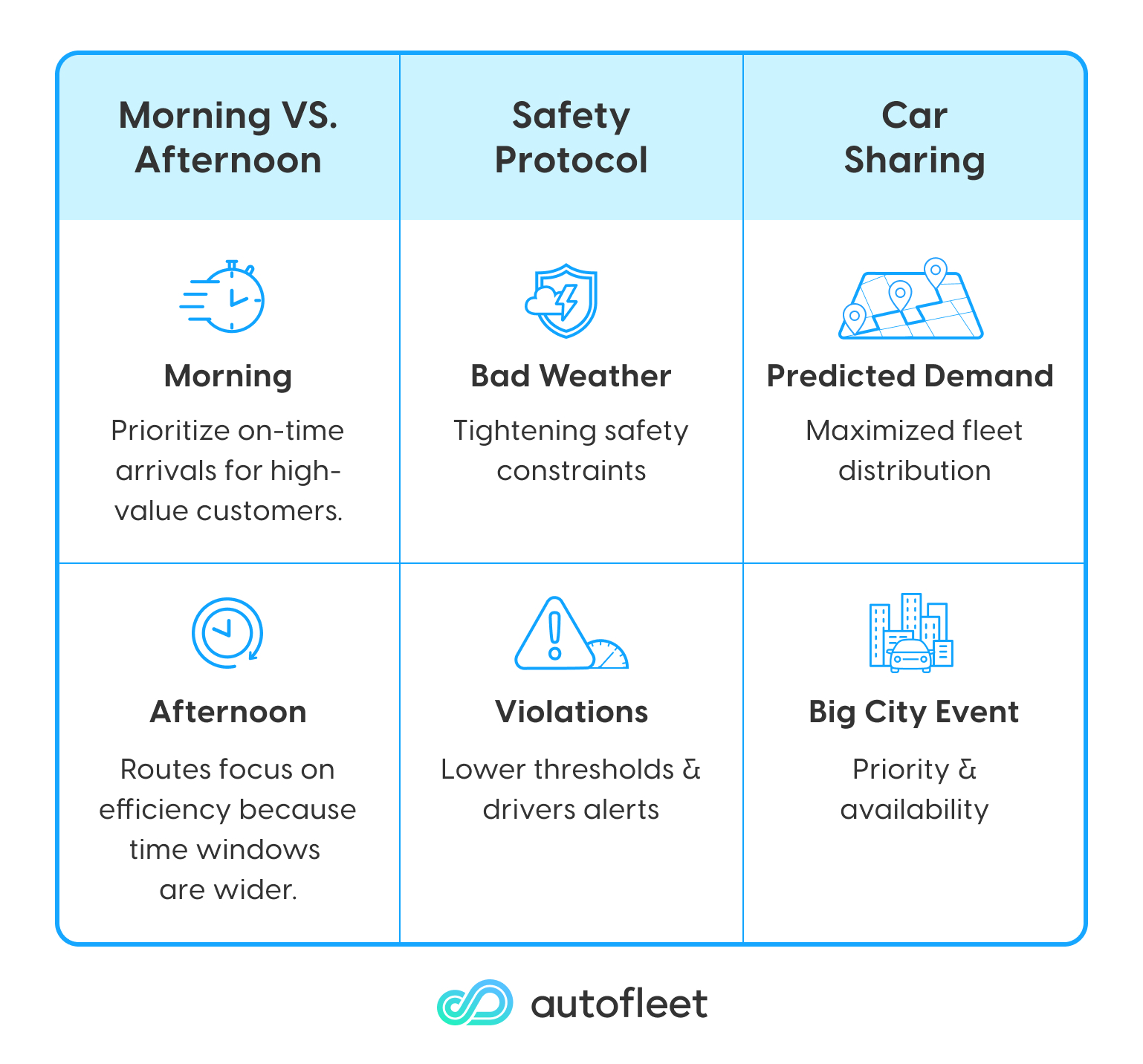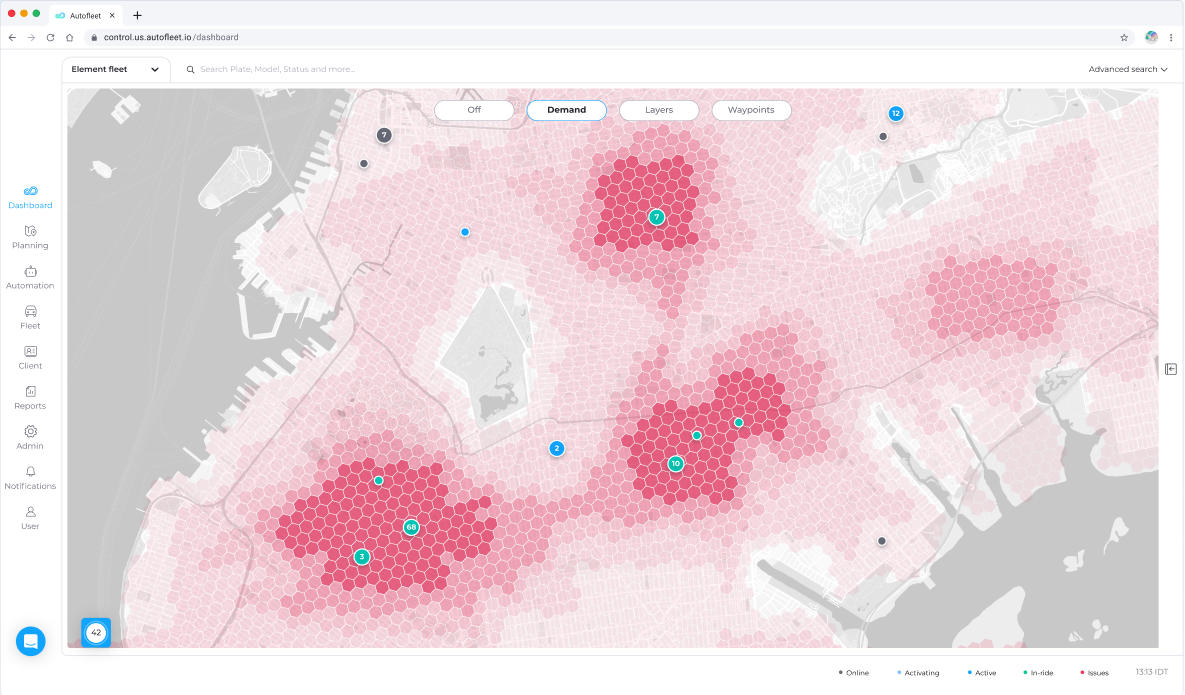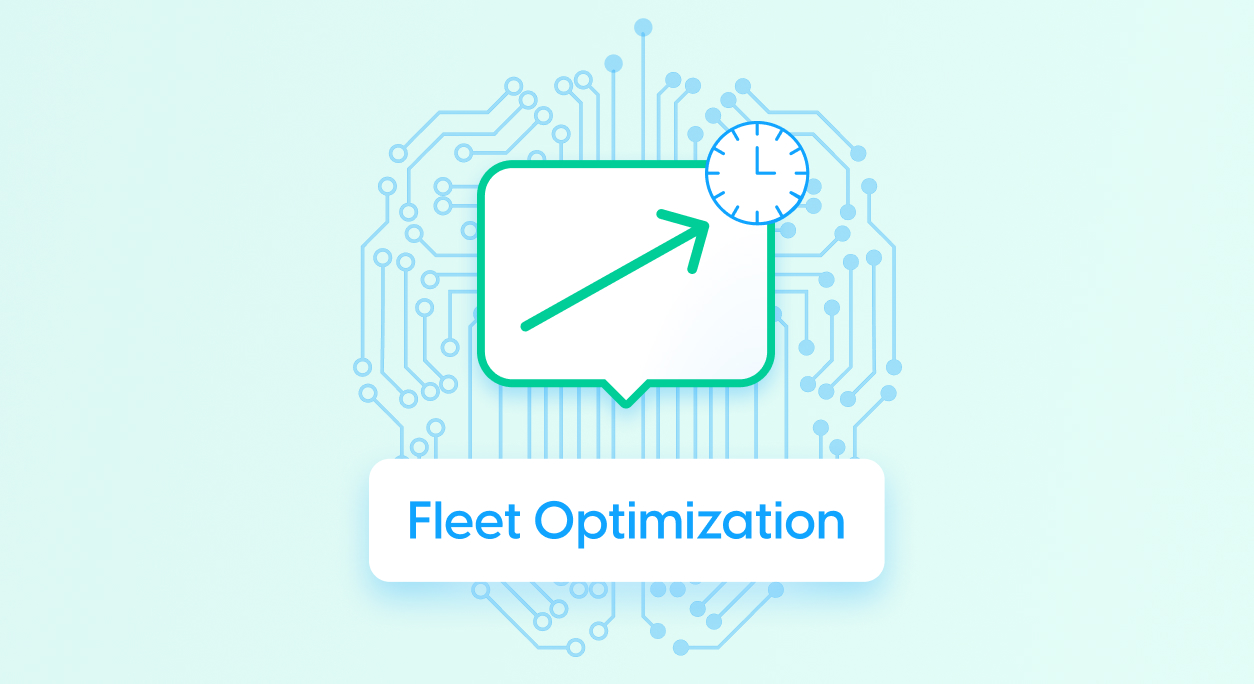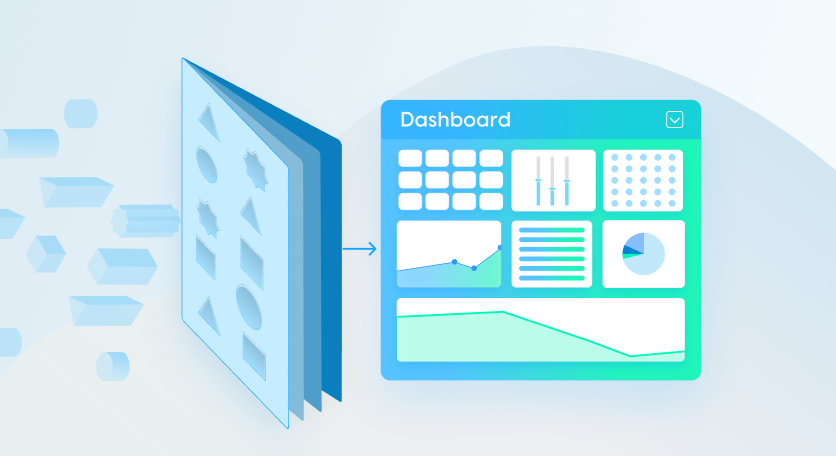







AI for Fleets: The industry’s guide for making AI work for your fleet
Let’s put all the buzzwords aside for a moment. In essence, AI for fleets is about using digital tools to get a better understanding of what is happening in the fleet, making better decisions, and taking action faster.
This blog is the summary of our series on AI for fleets. The series was written as part of our ongoing commitment to help fleet managers, maintenance supervisors, fleet analysts, coordinators and dispatchers, route planners, safety officers, procurement specialists, and other fleet professionals understand what AI tools are currently available for fleets and help make informed decisions on how to work AI into your fleet management and operations stack.
So far, the series includes:
with more to come.
AI works by incorporating and processing data from numerous sources. Using this data, an AI engine can produce unprecedented visibility, both real-time and historical, launch automated workflows as necessary, and provide the tools, insights, and even recommendations to improve fleet performance easily.
At its best, AI learns what works for your fleet or service and implements it continuously, cutting down costs and staffing, and providing a clear view into your operation.
The Daily Fleet Reality: Too Many Systems, Not Enough Truth

The reality of many fleets and transportation systems is that of multiple separate systems operating independently. Data is scattered across TMS, CMMS, and email, as well as telematics and fleet management systems. Dispatchers and planners typically learn about delays too late to fix them, safety teams can drown in dashcam footage, and fleet managers face mounting costs.
Technology made fleet operations more efficient, but it created new challenges. Teams spend their days firefighting and flipping between screens instead of planning and taking care of the fleet. That is where AI comes in, organizing data, collecting information across systems, and creating a unified single pane of glass.
Moreover, using AI goes beyond efficiency and time management. It allows decisions to be made based on insights grounded in facts, not just gut feelings, and provides access to analytics and facts that can be nearly impossible to access otherwise.
Bringing Everything Together: One Source of Truth

So the first challenge AI can help with is making your existing systems talk to each other properly and present you with a clear, unified picture of the state of your fleet.
The goal is simple: create one operational picture that everyone can trust and act on. When the fleet manager, the driver, the route planner, and the technician all look at the same task, they should see the same ETA, the same status, the same plan. No more separate systems, each showing a fraction of the information.
Connecting your fragmented data streams—GPS positions, vehicle status, work orders, inventory levels, traffic conditions, and more—requires the AI engine to synchronize, harmonize, normalize, and standardize data and translate it into a common language.
Visibility matters, and without it, you cannot make informed decisions.
Optimizing Fleets for Reality: Balancing What Actually Matters
Here are some examples of how AI earns its keep: ensuring SLA compliance even when a vehicle needs servicing, optimizing charging to stay within energy budgets, monitoring driver safety without requiring extensive in-cab footage review, and there are many more.
An effective AI for fleets doesn't make decisions for you—it helps you make them better and faster. You tell the system what matters to your business: examples include on-time performance, cost per stop, driver workload, vehicle maintenance, emissions, safety, etc. The system finds plans that balance these priorities the way you want, not the way some algorithm thinks is optimal.
More importantly, it can adjust those priorities on the fly, for example:

Your operations team controls these dials, not your IT department.
Automating Fleet Management Tasks: Where AI Handles the Routine
AI dashboards show you what's happening. An automation engine makes things happen smoothly with your guidance.
Once you have reliable data and smart optimization, you can start connecting insights directly to actions. This can help take the load off of your fleet management team, handling most routine cases automatically and leaving your people to handle exceptions, plan, and strategize.
Think about the patterns fleet teams handle every single day:
Vehicle malfunction. Your telematics reports that a warning light has just turned on in one of your vehicles. An alert on your dashboard automatically triggers an AI agent that creates the relevant work order. If the maintenance model indicates that the issue is not critical, it schedules the work during off-peak hours, identifies a replacement vehicle, and alerts the supervisor. If it is urgent, it reroutes the driver to an available workshop and replans the day across the fleet, relocating tasks as necessary.
Urgent request from a VIP client. An AI agent checks all current plans and finds the best fit. Your dispatcher then reviews the plan, approves it with one click, and moves on, while the AI recalculates everyone's day, messages the right driver with instructions, and updates the customer with a realistic ETA.
An electric vehicle needs to be charged. Automations can take care of even the most day-to-day fleet tasks, like charging EV vehicles. The AI continually monitors the fleet and looks ahead using your CRM or ERP systems and predictive models. When the right circumstances present themselves, e.g., a vehicle is running on 40% battery power, but has no task in the near future, it will direct the driver to the nearest compatible charger.
The same approach works with vendors and subcontractors. Jobs get assigned automatically based on geography, capability, and SLA terms. GPS evidence gets matched with invoices. Your team focuses on exceptions and relationship management, not paperwork shuffling.
Implementing AI for Fleets Can Be a Lot Simpler Than You Think

The good news: you don't need to replace your existing systems or bet the company on one massive project. The best architecture for implementing AI in your fleet is modular—connect data streams, build a unified operational view, add optimization and policy services, wire in automation carefully, and keep comprehensive logs.
These pieces are independent; you can upgrade your fleet management dashboards without touching your planning modules or implement AI-powered routing without touching maintenance.
AI changes what your people do, and that needs careful management. Fleet managers' roles are evolving to handle exceptions that require human insights and reasoning, and to become policy designers. To make this transition work, you need to train people on the why behind decisions, not just what buttons to press.
How AI Transforms Every Fleet Function
Some use cases, like last-mile delivery, where smart routing cuts miles and costs and guarantees ETAs, lend themselves easily to using AI. And using AI allows tighter delivery windows. A smart AI solution would also integrate to custom maps and allow building access rules and parking restrictions that match the fleet policy and help avoid fines and citations. In field service routing that depends on matching the right technician with the right skills and parts to the right job, using AI routing raises first-time fix rates and job satisfaction. When urgent or high-priority tickets appear mid-day, they just smoothly slot into the day.
Outside routing lifecycle management, and optimized fleet management for example, bring it all together—balancing utilization, safety, and maintenance with the same continuous loop. And using predictive maintenance to reduce breakdowns, EV routing to treat charging, and more.
That's the promise of AI for fleets: giving fleet managers and their people the information, tools, and time they need to make the most out of their fleet assets. Most tellingly, it allows fleets to handle more volume without adding more chaos (and often without adding more assets).

Table of сontents
Stay up to date!

Stay Up To Date!



.png)







